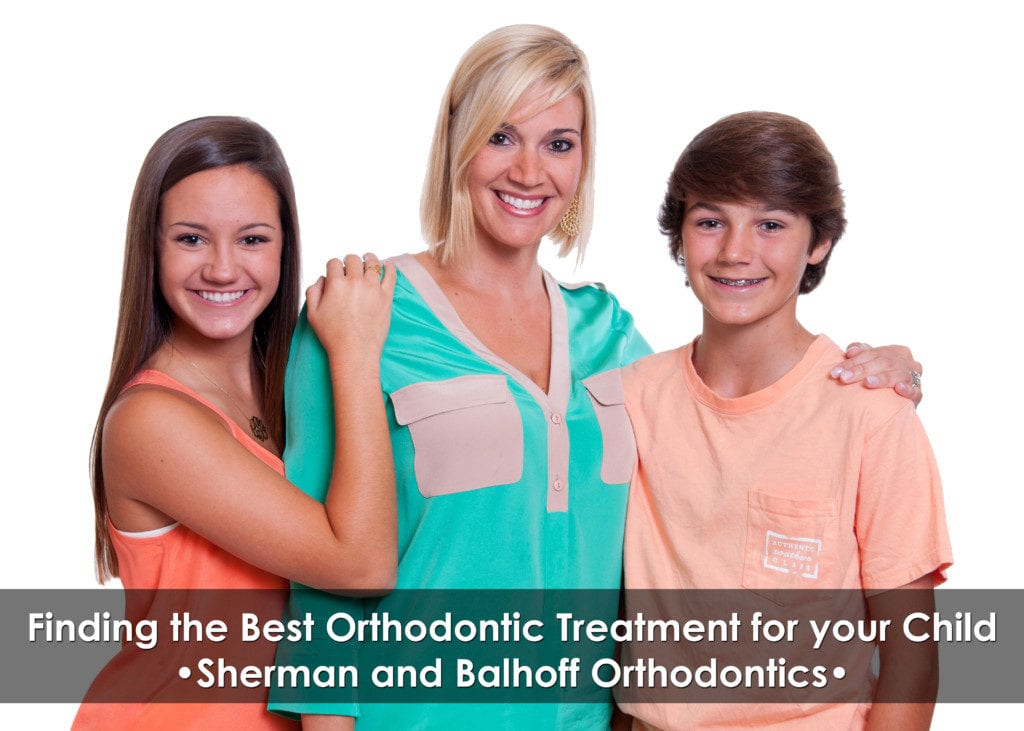Disclosure :: This post is sponsored by Sherman and Balhoff Orthodontics.
Finding the Best Orthodontic Treatment For Your Child
Making the decision to seek the advice of an orthodontist brings many questions to the mind of most parents. What age do they need to start treatment? What kind  of braces does my child need? Which is most effective? What is the difference between traditional braces and the newer technology of Invisalign? And lastly, how long will they need to wear braces?
of braces does my child need? Which is most effective? What is the difference between traditional braces and the newer technology of Invisalign? And lastly, how long will they need to wear braces?
Our goal at Sherman and Balhoff Orthodontics is to find the treatment that works best for each individual and then guide each patient through the orthodontic treatment process.
In this article, we will discuss the pros and cons of both traditional braces and the Invisalign aligner system in order to guide you through the decision making process to determine which system is best for you or your child. While both traditional braces and Invisalign are designed to straighten teeth and the human physiology of tooth movement is the same in both systems, there are definite differences between the two.
What You Should Know About Traditional Braces Verses Invisalign
First, braces are fixed onto the teeth, have been around for a long time with a history of great results and are efficient at treating difficult bite problems and more severe type cases. They can be metal or clear and patients can have fun placing different colored soft elastic ties on each brace. Most adolescent patients wear braces for 18-24 months and most adults wear braces 12-18 months.
The Invisalign system is different from traditional braces in two very obvious ways. They are removable and Invisible. The Invisalign system was first introduced in the late 1990’s as a computerized approach to tooth movement with the software having gone through numerous upgrades since the inception. Today, patient’s mouths are scanned, uploaded and then the orthodontist and Invisalign technician work together to ideally straighten the teeth on the computer using x-ray and photographic imaging of the patient to help complete the ideal treatment plan for each patient. A series of clear plastic trays are then produced to gently align the teeth, wearing each tray 20-22 hours per day. With the development of the new highly elastic “SmartTrack” aligner material, patients can now change trays each week which can reduce overall treatment time. In theory, the entire Invisalign treatment should require the same amount of time as braces, but because Invisalign is a less invasive approach to straightening teeth, our experience has shown that many of our orthodontic patients complete their orthodontic treatment in a shorter amount of time, averaging 6-12 months for most adults. Although there are no restrictions for Invisalign patients, you must remove the aligners before meals and properly clean and maintain the aligners on a daily basis.
In conclusion, the Invisalign system isn’t necessarily a more effective treatment than braces and it is not recommended for more complex type orthodontic cases. However, for most adults and many adolescents who want to straighten their teeth without the stigma of metal braces, Invisalign is a great alternative.
It is important that your child visit an orthodontic specialist starting at age 7. While they will probably not begin treatment at this age, it will allow the orthodontist to monitor the growth and development of your child until he/she is ready for treatment.
Are you looking to learn more? Contact Sherman & Balhoff today for a complimentary consultation. Call (225) 769-1276 and let them know that Red Stick Moms Blog (RSMB) sent you.




















